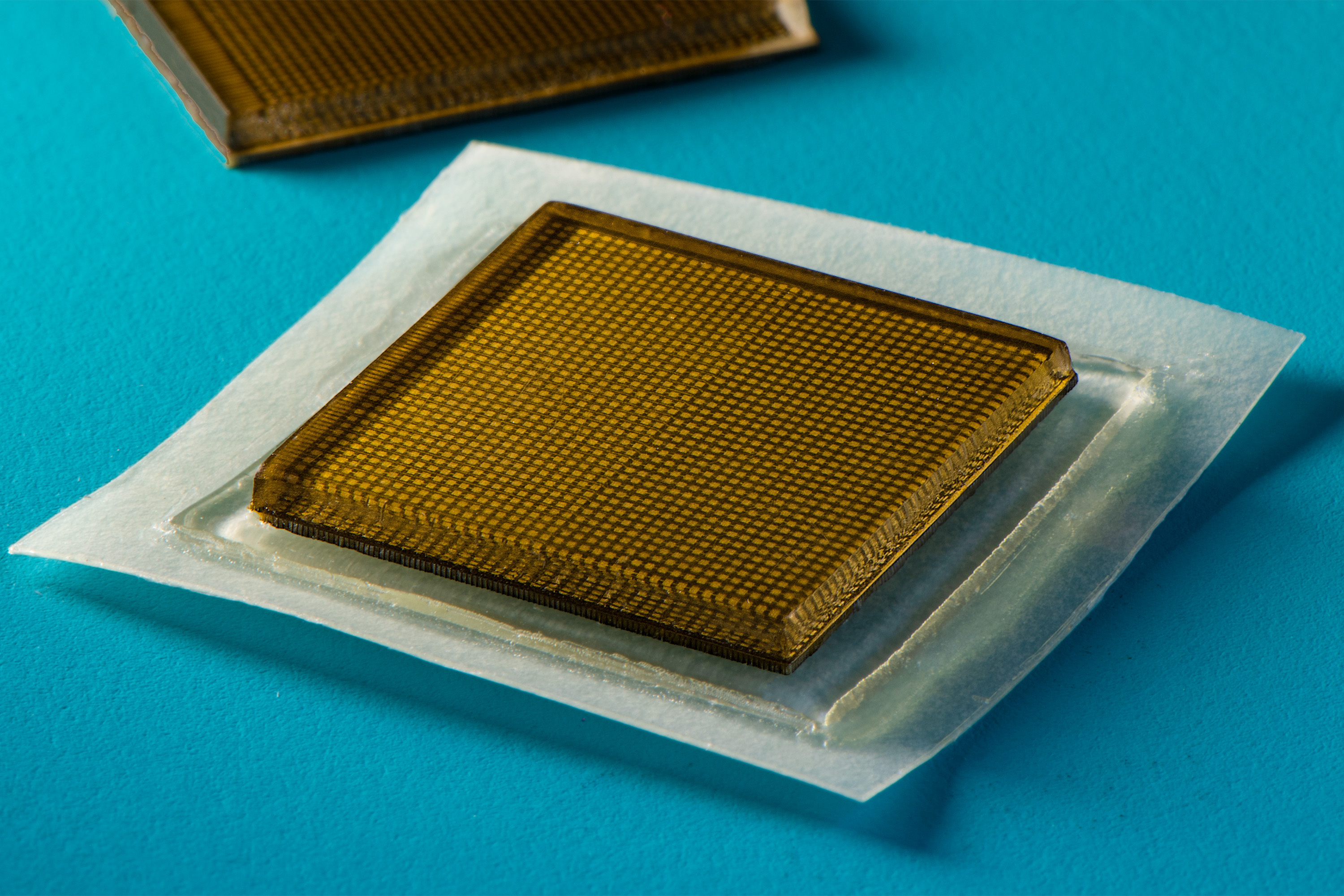Stick-on ultrasound
A wearable adhesive device can monitor internal organs for up to two days.
What if accessing clear images of your insides were as easy as slapping on a Band-Aid? A team led by Professor Xuanhe Zhao could make that possible with its design for a stamp-size device that sticks to skin and can provide continuous ultrasound imaging of internal organs for 48 hours.
In conventional ultrasound imaging, a technician coats a patient’s skin with a gel that transmits sound waves. A probe, or transducer, is then pressed against the gel, sending waves into the body that echo off internal structures and back to the probe, where the echoed signals are translated into visual images.
This setup makes it difficult to image organs over a long period of time. The new design, however, combines a rigid array of transducers with a stretchy adhesive layer that allows the device to conform to the moving body while the transducers maintain the same position relative to each other, yielding continuously clear images.
This story is only available to subscribers.
Don’t settle for half the story.
Get paywall-free access to technology news for the here and now.
Subscribe now
Already a subscriber?
Sign in
When the researchers applied the stickers to volunteers, they produced live, high-resolution images of major blood vessels and deeper organs such as the heart and stomach during activities such as sitting, standing, jogging, and biking.
The current design requires connecting the stickers to instruments that translate the reflected sound waves into images, but if the devices can be made to operate wirelessly—a goal the team is working toward—they could be made into wearable products that patients could take home from a doctor’s office or even buy at a pharmacy. They could even be used to monitor the progression of tumors or the development of fetuses in the womb.
“We imagine we could have a box of stickers, each designed to image a different location of the body,” Zhao says. “We believe this represents a breakthrough in wearable devices and medical imaging.”
